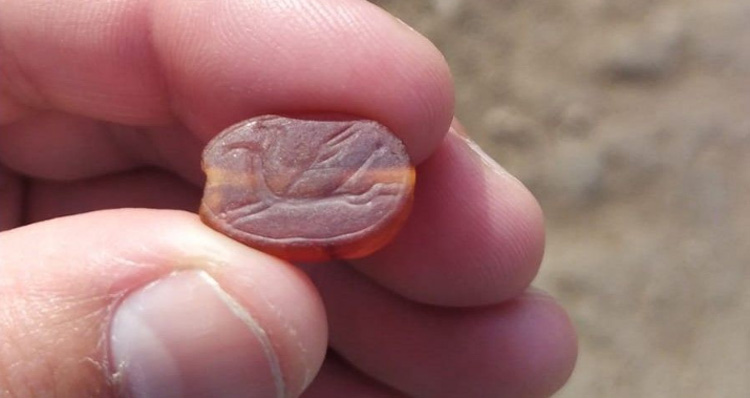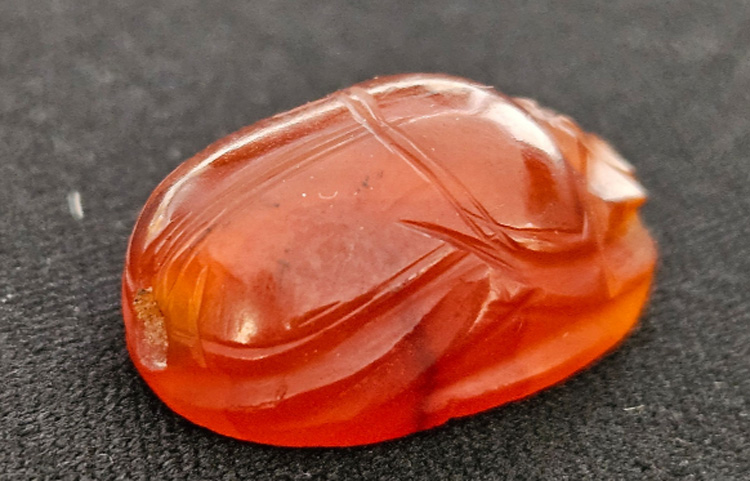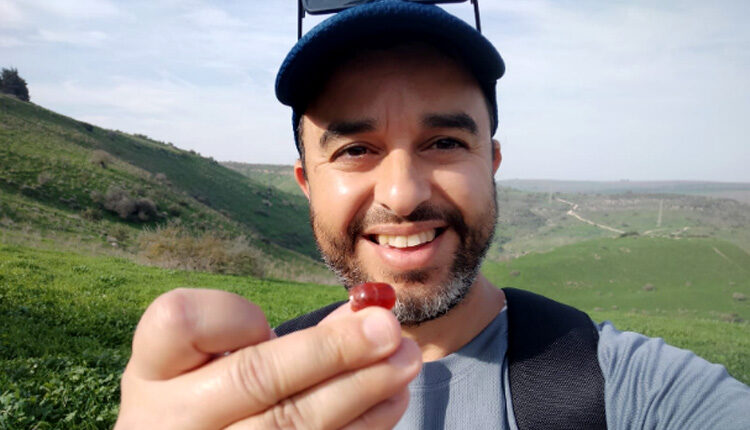Hiker Discovers An Ancient And Rare Scarab In The Tabor Stream Nature Reserve In The Lower Galilee In Israel
Erez Avrahamov, a 45-year-old resident of Peduel, recently hiked the Tabor Stream Nature Reserve in the Lower Galilee in Israel, and to his surprise, found a scarab dating back to the First Temple period – about 2,800 years ago. “I had a two-day leave from the military and decided to take advantage of the sunny weather for a trip,” Avrahamov said. “During the trip, I saw something sparkling on the ground. At first, I thought it was a bead or an orange stone. After picking it up, I noticed engravings on it resembling a scarab. I reported the amazing find to the Israel Antiquities Authority.”

According to Nir Distelfeld of the Theft Prevention Unit at the Israel Antiquities Authority, “I received a call from Erez, and I understood that he found something special. I told him to look closely at the other side – the flat side of the scarab he found – and check if it was engraved. Immediately I heard an exclamation of amazement over the phone, and he reported to me that he identified a figure.”
According to Professor Emeritus Othmar Keel of the University of Fribourg in Switzerland: “The scarab, made of a semi-precious stone called carnelian, depicts a griffin (a mythical creature) or a winged horse galloping. Similar scarabs were dated to the 8th century BCE.”

The scarab was found at the foot of Tel Rekhesh, one of the important tel sites in the north of the country. The site is identified as the city of ‘Anacharath‘ (Joshua 19:19) within the territory of the tribe of Issachar. According to Dr. Yitzhak Paz, an archaeologist at the Israel Antiquities Authority who has excavated at Tel Rekhesh since 2006 as part of an archaeological expedition from Japan, “One of the most important periods of settlement dates back to the Iron Age (6-7th centuries BCE). During this period, a large citadel stood atop the mound containing fortified structures, paved bathrooms, halls, and ceremonial chambers which belonged to the Assyrian rule.
This rule was responsible for the destruction of the Kingdom of Israel. The scarab discovered at Tel Rekhesh may be from the period of the Assyrian rule and may indicate the presence of Assyrian officials (or perhaps Babylonian) at Tel Rekhesh during this period. The griffin appearing on the seal is a known artistic motif in Ancient Near Eastern art and is common on seals from the Iron Age. Considering the scarcity of finds discovered so far area of the citadel, and if indeed the seal can be dated to the late Iron Age based on iconographic considerations, it may be possible to link the seal to the Assyrian presence in the citadel of Tel Rekhesh, which may be a discovery of great significance!”

The scarab is a type of seal that was common throughout the region from the 4th millennium BCE onwards. Scarab seals were designed in the shape of a beetle, hence their name. The Egyptian name is derived from the verb “to be created” or “to be born” because the Egyptians saw the scarab as a symbol of the creator god.
Scarabs were made from a wide variety of stones, including semi-precious stones like amethyst and carnelian, but most scarabs were made of steatite – a soft talc stone that usually had a bluish-green glaze. The glaze survived only in the dry climate of Egypt, so on scarabs found in Israel, almost no traces of glaze can be found, and appear greyish white. Against this background, the orange color of the scarab stands out.

